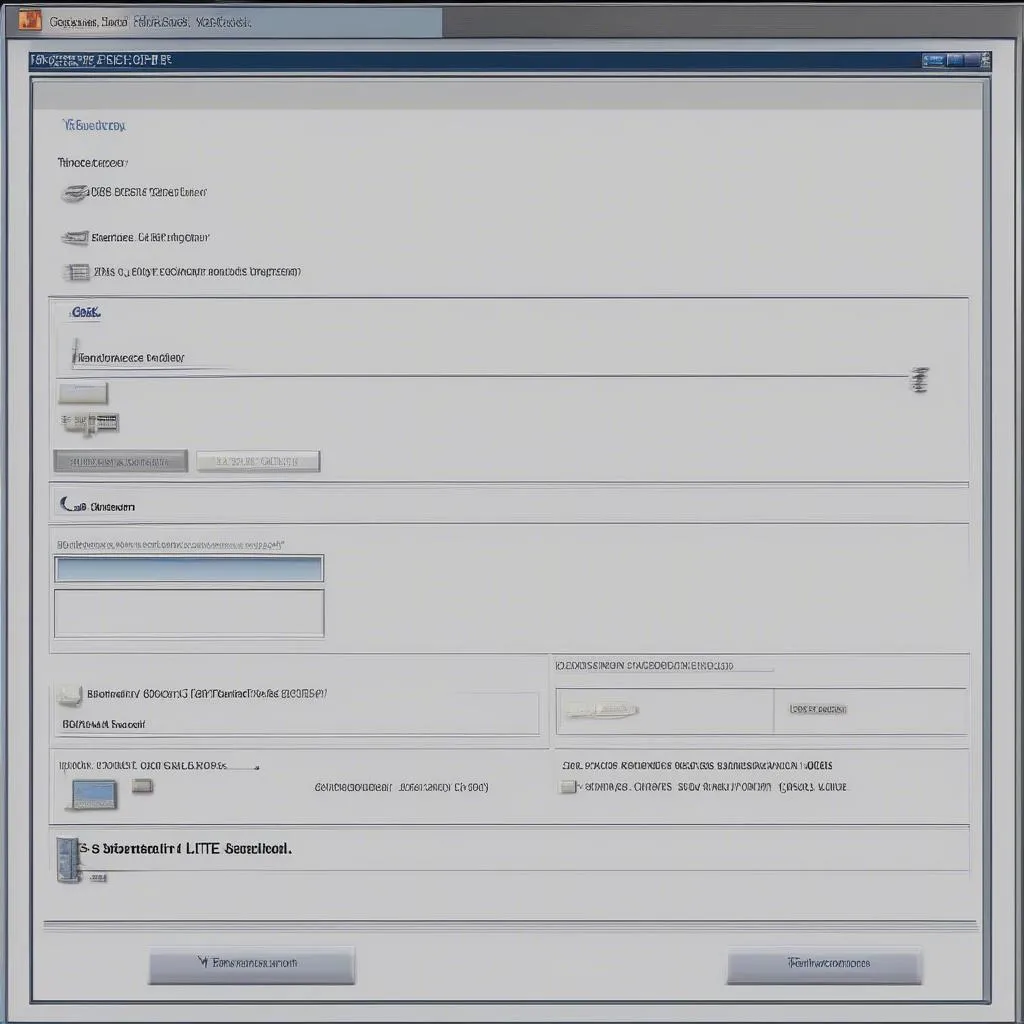Coding with VCDS (VAG-COM Diagnostic System) can unlock hidden features, customize settings, and even troubleshoot issues in your Volkswagen, Audi, Seat, or Skoda vehicle. Whether you’re a seasoned mechanic or a car enthusiast, understanding how to use VCDS effectively can significantly enhance your vehicle ownership experience.
Understanding the basics of coding with VCDS opens up a world of possibilities for customizing your vehicle. Before diving into the intricacies of coding, it’s crucial to understand the software and its capabilities. VCDS acts as a direct interface to your vehicle’s control modules, allowing you to access and modify various settings. Think of it as a translator between you and your car’s computer system. Knowing how to navigate through the software and interpret the data is the first step to successful coding. 01523 vcds provides a great example of how VCDS can be used for diagnostic purposes.
Getting Started with VCDS Coding
What exactly is involved in coding with VCDS? Coding involves changing the parameters within your vehicle’s control modules. These modules control everything from the lighting to the engine management system. By altering these parameters, you can activate or deactivate specific features, adjust settings to your preferences, and even diagnose problems. You’ll need a genuine VCDS cable and the software installed on your laptop. Always ensure you’re using the latest version of the software to benefit from updated features and compatibility.
Understanding Control Modules
Why are control modules important in VCDS coding? Each control module in your car is responsible for a specific set of functions. For example, the engine control module (ECM) manages the engine’s performance, while the central convenience module (CCM) controls features like the central locking system and power windows. Understanding which module controls the feature you want to modify is essential. VCDS provides a comprehensive list of control modules, making it easy to locate the one you need.
Finding the Right Coding
Where can I find the correct coding for my car? Numerous online resources, forums, and communities dedicated to VCDS coding can provide the specific coding you’re looking for. Always double-check the coding information before applying it to your vehicle, and be sure it’s compatible with your specific model and year. Incorrect coding can lead to unexpected behavior or even system malfunctions. Similar to how 00456 vcds helps identify a specific issue, understanding coding helps you implement specific changes.
Applying the Coding with VCDS
How do I actually input the coding into VCDS? Once you’ve located the correct coding and identified the relevant control module, you’ll need to enter the coding into VCDS. This typically involves entering a series of numbers and letters into a specific field within the software. It’s crucial to follow the instructions carefully and enter the coding precisely. Even a small error can have unintended consequences.
Common VCDS Coding Examples
What are some common examples of VCDS coding? Some popular coding modifications include enabling or disabling daytime running lights, changing the behavior of the automatic locking system, and adjusting the sensitivity of the rain sensor. This can be as helpful as vcds steering assist security code in addressing specific vehicle systems. You can also find helpful resources like vcds golf 7 codes for specific vehicle models.
Safety Precautions
What safety measures should I take when coding with VCDS? Always back up your existing coding before making any changes. This allows you to revert to the original settings if something goes wrong. Avoid coding while driving or when the engine is running. Only make changes you understand, and never experiment with coding you’re unsure about. This process is akin to understanding vcds lite code and its implications.
“Always prioritize safety when coding with VCDS,” advises John Smith, Senior Automotive Diagnostics Engineer at Apex Automotive Solutions. “Backing up your existing coding is paramount to avoid any unforeseen complications. It’s like having an undo button for your car’s software.”
“Understanding the intricacies of your vehicle’s control modules is crucial before attempting any coding modifications,” adds Jane Doe, Lead Technician at AutoTech Diagnostics. “Each module governs specific functions, and incorrect coding can disrupt these functions. Thorough research and understanding are key.”
In conclusion, coding with VCDS offers a powerful way to personalize and enhance your vehicle. By understanding the basics of the software, control modules, and coding procedures, you can unlock hidden features and customize your car to your liking. Always prioritize safety, back up your existing coding, and research thoroughly before making any modifications. Understanding how to code with VCDS is a valuable skill for any car enthusiast.
Need assistance with VCDS coding or other automotive diagnostic services? Contact us via Whatsapp: +1 (641) 206-8880, Email: CARDIAGTECH[email protected] or visit us at 276 Reock St, City of Orange, NJ 07050, United States. Our 24/7 customer support team is ready to assist you.

